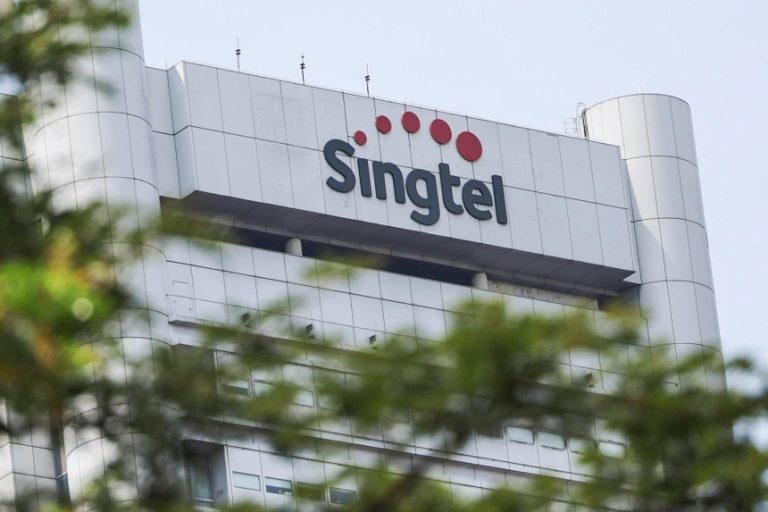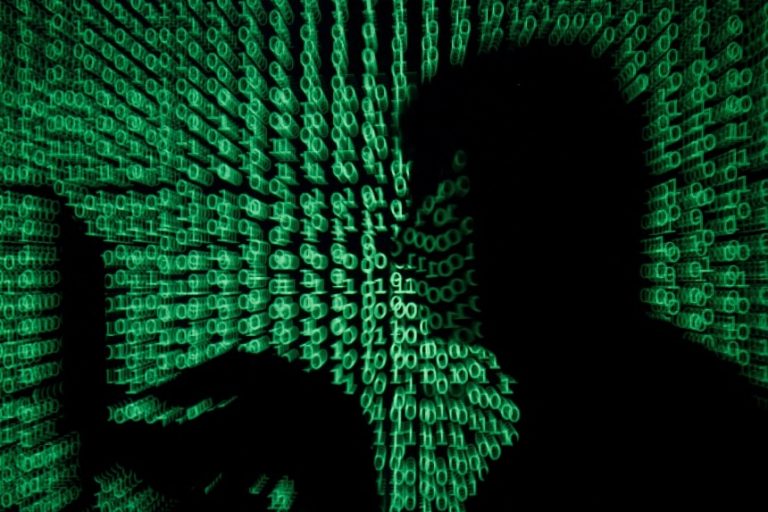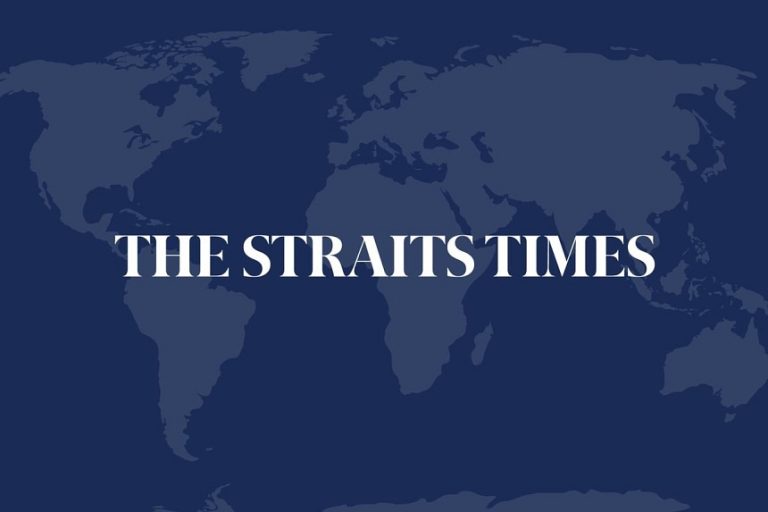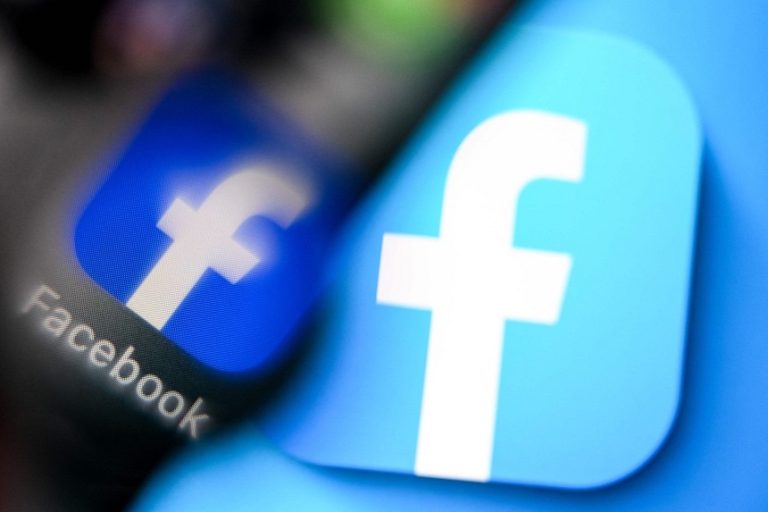
Similar Posts

SINGAPORE – Singapore Telecommunications Ltd., Singapore’s largest mobile carrier, was breached by Chinese state-sponsored hackers this summer as part of a broader campaign against telecommunications companies and other critical infrastructure operators around the world, according to two people familiar with the matter.
The previously undisclosed breach was discovered in June, and investigators believe it was pulled off by a hacking group known as Volt Typhoon, according to the two people, who asked not to be identified to discuss a confidential investigation.
Officials in the US, Australia, Canada, the UK and New Zealand – the “Five Eyes” intelligence-sharing alliance – warned earlier in 2024 that Volt Typhoon was embedding itself inside compromised IT networks to give China the ability to conduct disruptive cyberattacks in the event of a military conflict with the West.
The breach of Singtel, a carrier with operations throughout South-east Asia and Australia, was seen as a test run by China for further hacks against US telecommunications companies, and information from the attack has provided clues about the expanding scope of suspected Chinese attacks against critical infrastructure abroad, including in the US, the people said.
In an e-mailed response to queries from Bloomberg News, Singtel did not directly address questions about the alleged breach. “We understand the importance of network resilience, especially because we are a key infrastructure service provider,” the company said. “That’s why we adopt industry best practices and work with industry-leading security partners to continuously monitor and promptly address the threats that we face on a daily basis. We also regularly review and enhance our cybersecurity capabilities and defences to protect our critical assets from evolving threats.”
A spokesperson for the Chinese Embassy in Washington, Liu Pengyu, said he was not aware of the specifics, as relayed by Bloomberg, but that in general, China firmly opposes and combats cyberattacks and cybertheft.
The US is currently battling its own suspected Chinese attacks of political campaigns and telecommunications companies. Officials have described the telecom breaches as one of the most damaging campaigns on record by suspected Chinese hackers and one that they are still seeking to fully understand and contain.
In the US telecommunications attacks, which investigators have attributed to another Chinese group called Salt Typhoon, AT&T Inc. and Verizon Communications Inc. are among those breached, and the hackers potentially accessed systems the federal government uses for court-authorised network wiretapping requests, the Wall Street Journal reported in early October.
US intelligence officials think the Chinese hacking group that Microsoft Corp. dubbed Salt Typhoon may have been inside US telecommunications companies for months and found a route into an access point for legally authorised wiretapping, according to a person familiar with their views.
AT&T declined to comment. Verizon did not respond to a request for comment.
Through those intrusions, the hackers are believed to have targeted the phones of former President Donald Trump, running mate JD Vance and Trump family members, as well as members of Vice-President Kamala Harris’ campaign staff and others, the New York Times has reported.
In the case of the alleged Singtel breach, one of the people familiar with that incident said the attack relied on a tool known as a web shell.
In August, researchers at Lumen Technologies Inc. said in a blog post they assessed with “moderate confidence” that Volt Typhoon had used such a web shell. A sample of the malware was first uploaded to VirusTotal, a popular site for security experts to research malicious code, on June 7 by an unidentified entity in Singapore, according to Lumen researchers.
The web shell allowed hackers to intercept and gather credentials to gain access to a customer’s network disguised as a bona fide user, they said.
The hackers then breached four US firms, including internet service providers, and another in India, according to Lumen researchers.
General Timothy Haugh, director of the National Security Agency, said in early October that the investigations into the latest telecommunications breaches were at an early stage. Later in October, the FBI and the Cybersecurity and Infrastructure Security Agency said they had identified specific malicious activity by actors affiliated with the Chinese government and immediately notified affected companies and “rendered technical assistance.”
A spokesperson for the National Security Council last week referred to the “ongoing investigation and mitigation efforts,” but directed further questions to the FBI and CISA.
Singtel uncovered the breach of its network after detecting suspicious data traffic in a core back-end router and finding what it believed was sophisticated, and possibly state-sponsored, malware on it, according to the other person familiar with the investigation.
The malware was in “listening” mode and didn’t appear to have been activated for espionage or any other purpose, the person said, adding that it reinforced a suspicion that the attack was either a test run of a new hacking capability or that its purpose was to create a strategic access point for future attacks.
There is evidence that Salt Typhoon reached the US at least as early as spring 2024, and possibly long before, and investigators tracking the group think it has infiltrated other telecommunications companies throughout Asia, including in Indonesia, Nepal, the Philippines, Thailand and Vietnam, according to two people familiar with those efforts.
The NSA has warned since 2022 that telecommunications infrastructure was vulnerable to Chinese hacking. Volt Typhoon has been active since at least mid-2020, having attacked sensitive networks in Guam and elsewhere in the US with a goal of burrowing into critical infrastructure and staying undetected for as long as possible.
The hacks by both Chinese Typhoon groups have alarmed Western officials and raised concerns about the number and severity of backdoors – a way to get around security tools and gain high-level access to a computer system – that China has placed inside critical IT systems. Those entry points could be used to conduct espionage or prepare the battlespace for use in a potential military conflict with the West.
Chinese hackers have long been accused of conducting espionage attacks against the US – including, most notably, the theft of security clearance applications for tens of millions of US government workers held by the Office of Personnel Management.
But officials say the latest hacks go a step further and in some cases suggest China may be amassing capabilities to disrupt or degrade critical services in the US and abroad.
Paul Nakasone, a retired general who led the NSA for nearly six years until February, told reporters in October that the latest telecommunications hacks by Salt Typhoon were distinguished by their scale, and that the two Chinese groups represent a tremendous challenge for the government. “I am not pleased in terms of where we’re at with either of the Typhoons,” he said. BLOOMBERG

WASHINGTON – A U.S. Senate Judiciary subcommittee overseeing technology issues will hold a hearing Tuesday on Chinese hacking incidents, including a recent incident involving American telecom companies.
The hearing to be chaired by Senator Richard Blumenthal will review the threats “Chinese hacking and influence pose to our democracy, national security, and economy,” his office said, adding the senator plans “to raise concerns about Elon Musk’s potential conflicts of interest with China as Mr. Musk becomes increasingly involved in government affairs.”
Musk, the head of electric car company Tesla, social media platform X and rocket company SpaceX, emerged during the election campaign as a major supporter of U.S. President-elect Donald Trump. Trump appointed him as co-head of a newly created Department of Government Efficiency to “slash excess regulations, cut wasteful expenditures, and restructure Federal Agencies.”
Musk, who was in China in April and reportedly proposed testing Tesla’s advanced driver-assistance package in China by deploying it in robotaxis, did not immediately to requests for comment.
The hearing will include CrowdStrike Senior Vice President Adam Meyers and Telecommunications Industry Association CEO David Stehlin, Strategy Risks CEO Isaac Stone Fish and Sam Bresnick, research fellow at the Center for Security and Emerging Technology at Georgetown University,
Last week, U.S. authorities said China-linked hackers have intercepted surveillance data intended for American law enforcement agencies after breaking in to an unspecified number of telecom companies, U.S. authorities said on Wednesday.
The hackers compromised the networks of “multiple telecommunications companies” and stole U.S. customer call records and communications from “a limited number of individuals who are primarily involved in government or political activity,” according to a joint statement released by the FBI and the U.S. cyber watchdog agency CISA.
The announcement confirmed the broad outlines of previous media reports that Chinese hackers were believed to have opened a back door into the interception systems used by law enforcement to surveil Americans’ telecommunications.
It follows reports Chinese hackers targeted telephones belonging to then-presidential and vice presidential candidates Donald Trump and JD Vance, along with other senior political figures, raised widespread concern over the security of U.S. telecommunications infrastructure.
Beijing has repeatedly denied claims by the U.S. government and others that it has used hackers to break into foreign computer systems.
Last month, a bipartisan group of U.S. lawmakers asked AT&T, Verizon Communications and Lumen Technologies to answer questions about the reporting hacking of the networks of U.S. broadband providers. REUTERS

WASHINGTON – Russian hackers are going after US government officials, defence workers and others in a new email phishing campaign targeting thousands of people, according to Microsoft Corp.
The hackers have sent “a series of highly targeted spearphishing emails” to thousands of people in more than 100 organisations since Oct 22, according to a blog post from Microsoft Threat Intelligence published on Oct 29.
The latest campaign will add to mounting concerns over US failures to outwit suspected Russian and Chinese hackers.
The FBI said on Oct 25 it is investigating unauthorised access by Chinese state-affiliated hackers targeting the commercial telecommunications sector.
In some of the emails that were part of the latest campaign, the senders impersonated Microsoft employees, according to the blog.
Spearphishing involves sending tailored emails to individuals, including links to malicious websites that can then steal information.
It wasn’t immediately clear how many of the attacks, if any, were successful.
Microsoft has said the attacks are perpetrated by a sophisticated Russian nation-state group it calls Midnight Blizzard, which US and UK governments have connected to the SVR, the Russian foreign intelligence service.
The company said in January that the group attacked its corporate systems, getting into a “small number” of email accounts, including senior leadership and employees who work in cybersecurity and legal.
In April, US federal agencies were ordered to analyse emails, reset compromised credentials and work to secure Microsoft accounts.
At the time, the Cybersecurity and Infrastructure Security Agency (Cisa) said the incident represented a “grave and unacceptable risk” to agencies, according to the April directive.
Cisa and US State Department didn’t immediately respond to requests for comment.
The Russian Embassy in Washington didn’t immediately respond to a request for comment. BLOOMBERG

WASHINGTON – A previously confidential directive by Biden administration lawyers lays out how military and spy agencies must handle personal information about Americans when using artificial intelligence, showing how the officials grappled with trade-offs between civil liberties and national security.
The results of that internal debate also underscore the constraints and challenges the government faces in issuing rules that keep pace with rapid advances in technology, particularly in electronic surveillance and related areas of computer-assisted intelligence gathering and analysis.
The administration had to navigate two competing goals, according to a senior administration official Joshua Geltzer, the top legal adviser to the National Security Council, “harnessing emerging technology to protect Americans, and establishing guardrails for safeguarding Americans’ privacy and other considerations”.
The White House last month held back the four-page, unclassified directive when President Joe Biden signed a major national security memo that pushes military and intelligence agencies to make greater use of AI within certain guardrails.
After inquiries from The New York Times, the White House has made the guidance public. A close read and an interview with Mr Geltzer, who oversaw the deliberations by lawyers from across the executive branch, offers greater clarity on the current rules that national security agencies must follow when experimenting with using AI.
Training AI systems requires feeding them large amounts of data, raising a critical question for intelligence agencies that could influence both Americans’ private interests and the ability of national security agencies to experiment with the technology.
When an agency acquires an AI system trained by a private sector firm using information about Americans, is that considered “collecting” the data of those Americans?
The guidance says that does not generally count as collecting the training data – so those existing privacy-protecting rules, along with a 2021 directive about collecting commercially available databases, are not yet triggered.
Still, the Biden team was not absolute on that question. The guidance leaves open the possibility that acquisition might count as collection if the agency has the ability to access the training data in its original form, “as well as the authorisation and intent to do so.” NYTIMES

SEOUL – South Korea has fined Facebook-parent Meta more than 21.6 billion won (S$20.6 million) for illegally collecting sensitive user information from nearly a million people without consent and sharing it with advertisers, the country’s data watchdog said Nov 5.
The firm, which also owns Instagram, ran afoul of laws prohibiting the use of information on political opinions, religious beliefs and people’s sex life unless the individual provides explicit consent, Seoul’s Personal Information Protection Commission added.
It added that the tech giant collected sensitive information from around 980,000 domestic users in South Korea through their Facebook profiles.
This included details about their religious beliefs and whether they are in a same-sex relationship.
The watchdog said it had confirmed that such information was provided to advertisers by Meta, with around 4,000 advertisers using it.
Meta “analysed user behaviour data, including pages liked and ads clicked on Facebook”, to create and implement targeted advertising related to “sensitive themes” such as transgender issues, homosexuality and North Korean defectors, officials said.
The commission said on Nov 5 it had decided to fine Meta 21.6 billion won.
It added that it “also ordered the company to establish legal grounds for processing sensitive information, implement safety measures, and respond diligently to users’ requests for access to their personal data”.
The decision is “significant in that they ensure that foreign operators providing global services must comply with the obligations set forth in (South Korea’s) Protection Act regarding the processing of sensitive information”. AFP

WASHINGTON – A sophisticated breach of US telecommunications systems has extended to the presidential campaigns, raising questions about the group behind the attack and the extent of its efforts at collecting intelligence.
It was unclear what data was taken in the attack. The far-reaching operation has been linked to the Chinese government and attributed to a group experts call Salt Typhoon.
Investigators believe hackers took aim at a host of well-connected Americans, including the presidential candidates – reflecting the scope and potential severity of the hack.
Here’s what to know.
What is Salt Typhoon?
Salt Typhoon is the name Microsoft cybersecurity experts have given to a Chinese group suspected of using sophisticated techniques to hack into major systems – most recently, US telecommunication companies.
The moniker is based on Microsoft’s practice of naming hacking groups after types of weather – “typhoon” for hackers based in China, “sandstorm” for efforts by Iran and “blizzard” for operations mounted by Russia. A second term, in this case “salt,” is used to denote the type of hacking.
Experts say Salt Typhoon seems to be focused primarily on counterintelligence targets, unlike other hacking groups that may try to steal corporate data, money or other secrets.
What do US officials think Salt Typhoon has done?
National security officials have gathered evidence indicating the hackers were able to infiltrate major telecom companies, including but not limited to Verizon.
The New York Times reported on Oct 25 that among the phones targeted were devices used by former President Donald Trump and his running mate, Senator JD Vance of Ohio. The effort is believed to be part of a wide-ranging intelligence-collection effort that also took aim at Democrats, including staff members of both Vice President Kamala Harris’ campaign and Senator Chuck Schumer of New York, the majority leader.
How serious is this hacking?
National security officials are still scrambling to understand the severity of the breach, but they are greatly concerned if, as it appears, hackers linked to Chinese intelligence were able to access US cellphone and data networks. Such information can provide a wealth of useful intelligence to a foreign adversary like China.
To some degree, the breach represents a continuation of data collection on the types of targets that spies have been gathering for decades. In this instance, however, the sheer quantity and quality of the information Salt Typhoon may have gained access to could put the intrusion into its own category, and suggests that US data networks are more vulnerable than officials realised.
What did the hackers get?
At this stage, that is still unclear. One major concern among government officials is whether the group was able to observe any court-ordered investigative work, such as Foreign Intelligence Surveillance Act collection – a highly secretive part of American efforts to root out spies and terrorists.
No one has suggested yet that the hackers were able to essentially operate inside individual targets’ phones. The more immediate concern would be if they were able to see who was in contact with candidates and elected officials, and how often they spoke and for how long. That kind of information could help any intelligence agency understand who is close to senior decision-makers in the government.
People familiar with the investigation say it is not yet known if the hackers were able to gain access to that kind of information; investigators are reasonably confident that the perpetrators were focused on specific phone numbers associated with presidential campaigns, senior government leaders, their staff members and others.
Like the weather, hacking is never really over, and the Salt Typhoon breach may not be over either. It is also possible that the United States may never learn precisely what the hackers got. NYTIMES
